October 16, 2017
Fall Color in the Great Smoky Mountains
Guests often ask us when is the best time to see the beautiful fall color in the Great Smoky Mountains. Our honest answer: “It depends”! Fall color timing depends on a wide variety of variables, making peak times impossible to predict.
We do know, however, that the autumnal hues light up the landscape for as long as seven weeks each year. The colors begin first in the higher elevations, then gradually move downward. Adding to this extended show is the fact that the Smokies are home to more than 100 varieties of native trees, most of them deciduous.
Most years the displays in the very highest elevations may be seen as early as mid-September, with colors visible from Clingman’s Dome Road. The colors in the middle and lower elevations can peak anywhere from mid-October through mid-November. According to http://www.gatlinburg.com/event/autumn-color-in-the-smokies, visitors can expect to enjoy beautiful colors from sugar maples, scarlet oak, sweet gum trees, red maples, and the hickories.
What Causes the Fall Color Change?
Cooler temperatures and longer nights cause the green pigment in the leaves to deteriorate. Carotenoids, the pigments that makes the leaves yellow (and carrots orange!) become more prominent. Red and purple colors come from anthocyanins. This pigments are formed when leaf sugars break down in bright sunlight.
We recommend the Roaring Forks Motor Nature Trail and the Blue Ridge Parkway as being especially scenic drives this time of year. The National Park Service http://www.nps.gov/grsm/planyourvisit/fall-suggestions recommends the following fall hikes: Appalachian Trail, Inspiration Point on Alum Cave Trail, Oconaluftee River Trail, Look Rock Tower, and Sutton Ridge Overlook.
Whether you have made your Great Smoky Mountain trip plans for this year, or are looking forward to 2018, remember that the fall color season typically lasts from mid-September through early November. This is a busy time of year, so we advise making your travel plans far in advance. Feel free to check with us at the Buckhorn Inn periodically–we sometimes have cancellations and then you can book accommodation with short lead times. Our dining room fills up quickly this time of year, so we encourage you to make your dinner reservations early. And don’t forget that Buckhorn Inn guests can pre-order hearty sack lunches to enjoy on a scenic drive or beautiful hike.
Happy fall!
October 9, 2017
Comments from our Guests
We were so happy to meet guests James and Cheryl Nipper this September. The Nippers were first-time
Buckhorn Inn visitors from Jacksonville, FL and were so warm and friendly.
He is an attorney, but we suspect also a photographer because he took some great shots of the Inn. James described the Inn as “laid-back, quaint, all-Southern”. We were so flattered when he said the Inn reminds him of what he sees in Southern Living! We actually have been in the magazine several times. Here is a “throwback” recommendation on our dining room from 2008! http://southernliving.com/travel/south-central/cozy-cabin-getaway-two
Guests Enjoy Buckhorn Grounds
The Nippers especially enjoyed the view of Mount LeConte from their room, and pointed out that it is the highest point in the Smoky Mountains that is fully situated in Tennessee. They walked the Buckhorn Inn Nature Trail and took some great photos of the pond. James says the scene reminds him of the movie “On Golden Pond”. He was kind enough to give us permission to share some of the great photos they took at the Buckhorn Inn. We are sharing them with no filters or special effects–we think they are gorgeous “as is”! We look forward to the Nippers’ next visit and in the meantime, please enjoy their photos.
Share Your Buckhorn Experience
We love seeing and sharing photos taken by our guests. Please send them by email to [email protected] along with a few descriptive comments. If you are on Instagram, please tag @innbuckhorn. Seeing the property through the eyes of our guests often gives us a brand new appreciation and perspective!
October 2, 2017
Carp-e Diem! New Denizens of Buckhorn Pond
Have you visited Buckhorn Pond? The spring-fed pond was created after Douglas Bebb built a dam there in the early 1950’s. The pond was designed with an ingenious overflow to protect the dam during heavy rains. Bass, carp and perch make their home here, as well as frogs, turtles and a few snakes. The brilliantly-colored wood duck, spotted sandpiper, heron, and other water fowl are attracted here.
We are responsible caretakers of our property, and invited a representative from the Tennessee Department of Natural Resources to review Buckhorn Pond and provide advice. He told us that our water and surrounding area is in excellent shape! His only recommendation was that a species of carp, the grass carp, could help us more easily maintain optimum levels of water plants.
Grass Carp Released in Pond
Our research revealed that the local farmers’ co-op is visited about once a month by a truck selling live fish. We went there on “fish truck day” and purchased six 12″-long triploid grass carp. The size was important as the naturalist told us if they were too small they could be eaten by the bass, and if they were done growing, they would not eat many water plants.
Innkeeper John and daughter-in-law Sharon took the large plastic bags filled with water and carp down to the pier. They “tempered” the fish by adding water from the pond to the bags until the temperatures equaled. Then they lowered the bags into the water and let the fish swim out. They report the fish looked happy in their new home!
The grass carp is a large, herbivorous, fresh-water fish. It is used as a food fish in China, but in the United States and Europe used mainly for controlling aquatic weeds. The use of these fishy friends lessens use of herbicides. The fish live up to 11 years and eat three times their weight in vegetation daily. They grow rapidly, as much as 10 inches in a summer. The average length of a fully-grown grass carp is around 30″. The grass carp are sterile and will not produce young in our pond.
For more information on stocking ponds, visit http://tn.gov/twra/article/fish-for-stocking.
September 25, 2017
Fall in the Great Smoky Mountains National Park
Fall is a great time to be in eastern Tennessee! The experts are predicting a magnificent display of colors this year and the Buckhorn Inn is so convenient to the Park. The Great Smoky Mountains National Park rangers have planned many free activities to help you enjoy the park. Here are some of our favorites!
Evening Campfire
A ranger is available to tell stories and histories around the campfire from 7:30 to 8:30 pm in the Elkmont Campground. The campfire program runs on Friday and Saturday evenings from September 16 through October 28.
The “Good Ol’ Days”
Walk the Mountain Farm Museum with a ranger and learn about the early settlers in this area. The Museum is located by the Oconaluftee Visitor Center. This event is available every Saturday at 10:30 am from September 16 through October 28.
Porters Creek Hike
Join a ranger in “our own backyard” to engage in an eye-opening exploration of how much, and how little, things have changed over the years in the Greenbrier Cove area. The hike is conducted on Wednesdays and Saturdays. Hikers should meet at the Porters Creek trailhead.
Fall Amble
This is one of our favorite ways to take in all the beautiful colors of fall in the Great Smoky Mountains National Park. Locations for this hike vary as the ranger will take you to the elevation where the leaves currently are at their peak. The hikes begin at 10:30 and are classified as moderately difficult. This hike is available on Sundays and Wednesdays from September 17 through October 25.
School Days at Little Greenbrier
Discover what it was like to live in a mountain community and to attend a one-room school house. This trip back in time happens every Tuesday through October 24 at 11 am and 2 pm. Meet at the Little Greenbrier Schoolhouse near the Metcalf Bottoms picnic area.
All of these events, and many more, are detailed at the National Park Service website. Please visit http://www.nps.gov/grsm/planyourvisit/calendar. We look forward to seeing you this fall!
September 11, 2017
Black-eyed Pea Soup is Perfect for Fall!
A hearty soup is perfect for fall, whether you are tailgating or relaxing after an afternoon of raking leaves. This soup is a Buckhorn Inn favorite and we are happy to share it with you.
Black-eyed Pea and Collards Soup
In a stockpot, bring to a boil:
1 lb. dried black-eyed peas
3 qts chicken stock
3 ribs diced celery
1 diced onion
2 cloves minced garlic
1 tsp dried thyme
1 tbl chopped parsley
2 bay leaves
1 tsp black pepper
Slowly boil until the peas are just tender. Then add:
12 ozs fresh or frozen chopped collards
Salt to taste
1 cup diced cooked ham or 1/2 cup cooked and crumbled bacon
Continue to cook until the peas are tender, adding more stock if necessary. Taste and correct seasonings. Some of our guests enjoy this soup with hot pepper-flavored vinegar or other hot sauce. Cornbread makes a wonderful accompaniment. This recipe makes 12 servings.
Black-Eyed Peas are Popular Throughout the South
The legume was introduced to the Southern U.S. as early as the 17th century. George Washington Carver was a proponent of planting the crop as it puts nitrogen back into the soil and is densely nutritious. The peas contain calcium, folate, protein, fiber, and vitamin A–all for less than 200 calories a cup! The blossoms produce nectar and attract bees and other pollinators.
A black-eyed pea soup such as this one often is served on New Year’s Day as it is thought to bring prosperity in the coming year. The peas swell when they cook, thus symbolizing prosperity. The greens represent money. Because of the rooting style of pigs, pork products are thought to symbolize forward motion. And serving this dish with cornbread (symbolizing gold) must guarantee success in this New Year!
Some say that when General Sherman marched his Union Army to the sea during the Civil War they pillaged the Confederate food supply. They left behind, though, the dried peas and salt port as they thought these foodstuffs not fit for human consumption. The Southerners considered themselves fortunate to have this food left behind to see them through, and this may be how the peas first became associated with good luck in the United States.
For more black-eyed pea recipes and cooking tips, visit the Southern Living website http://www.southernliving.com/side-dishes/how-to-cook-black-eyed-peas
Happy fall, y’all!
August 28, 2017
Guest Poem Describes Buckhorn as “Sanctuary”
We are fortunate indeed to host many creative, talented guests who create a poem and or other artwork inspired by their surroundings
. One of those is Charleen M. VonderMeulen. Charleen and her group of friends are regular visitors to the Buckhorn Inn. She crafted this lovely poem during her visit earlier this month. Her friends agree that it captures their experience here perfectly! Thanks so much for giving us permission to share your work, Charleen. Our favorite phrase is “takes our hand and trades it for a heart”–that will stay with us for a long, long time.
Mountain Sanctuary
This mountain sanctuary lights us up,
Engulfed with its love.
We meet as strangers, but seem guided from above.
There seems to be a wonder that leads us to a friend;
That takes our hand and trades it for a heart
And binds us into friendships we hope will never part.
Eclipsed by some Eternal Strength, no sun can ever dim.
We leave enwrapped–hugged–with this loving mist within.
Resources for Poet and Poem
Love poetry? So do we! One of our favorite resources is the Poetry Foundation http://www.poetryfoundation.org. This organization provides public programs and live events. They maintain a source of online access to Poetry magazine content–more than 100 years worth! They also have an easy-t0-access online archive of poet features, poems, and educational resources. Their awards and fellowships are designed to foster poets at all stages of their careers.
According to Writers’ Digest, there are more than 50 distinct types of poems. From abstract to epitaphs to free verse to sonnets, there is a style for nearly every taste. The emphasis on the aesthetics of language is one feature that delineates poetry from prose. Poets use metaphors, similes and other techniques to express emotion and open up a new world for their readers. Thank you again, Charleen, for taking us with you on this journey.
August 21, 2017
Buckhorn Neighbors: Buie Pottery
One of the oft-asked questions from our guests is where we got the charming little pottery lamps on our tables in the dining room.
These lamps were created by one of our neighbors in the Great Smoky Arts and Crafts Community, Buie Pottery. Buie began throwing pottery when she was only 17 and has been enjoying “slinging mud” every since! She earned a Bachelor of Fine Arts Degree from the University of Tennessee. She opened her studio and gallery in 1986. Her stoneware pieces are colorful, functional, and very attractive. http://www.buiepottery.com
A Primer on Pottery
It is one of the oldest human art forms. Some pieces have been identified as being from the pre-Neolithic period. Ancient vessels and figurines have been recovered from all over the world: China, Russia, Japan, Sub Saharan Africa, and South America. Pottery is durable, so shards and pieces have survived long after other materials have broken down. By examining these objects, archeologists learn much about the daily life of a particular culture.
Creating Pottery
Before the objects are formed, the clay must be kneaded to ensure that water is evenly distributed throughout the object. Then air trapped within the clay is removed. Then objects are formed from the prepared clay by hand-forming or by throwing on a potter’s wheel. The clay can also be molded or machine-shaped. The object is then heated to high temperatures in a kiln to remove the water. The resulting object is hard and strong.
Pieces may be decorated before, or after, firing. Some of the main means of decoration are painting, glazing or carving. Colored clays or other additives may be worked into the clay to create different textures and effects.
Watching a potter at work is fascinating. We encourage you to stop by one of the local artisan studios on the Arts & Crafts Loop the next time you visit us.
August 14, 2017
Buckhorn Neighbors: The Brown Farm and Its Bison Herd
I first became fascinated by bison when, as a child, I read Robert McClung’s 1960 book Shag, Last of the Plains Buffalo. The story of the magnificent beast’s struggle against drought, famine, and hunters made a lasting impact on me. Imagine my delight to realize that a herd resides only a little more than a mile from the Buckhorn Inn!
Locals know Benny Hammonds as the longtime Gatlinburg-Pittman high school football coach. In 2013 he purchased 3 bison cows and one bull. A recent birth puts the size of the herd at seven now. To visit The Brown Farm, turn right onto Buckhorn Road from Tudor Mountain Road. Drive a little more than a mile (the road turns into #454) and you will see the farm on the left. There is no admission charge and there is parking. Be careful–the fence is electrified.
Status of American Bison
The American Bison (also sometimes called American Buffalo) is the largest surviving land animal in North America. During the 19th and 20th centuries the creatures were hunted nearly to extinction. An estimated 50 million bison were slaughtered for sport. They are no longer listed as endangered, but their future is not assured. According to the National Bison Association, http://www.bisoncentral.com, it is mainly through the efforts of small farmers, like Mr. Hammonds, that the animals are being preserved.
They may appear peaceful and nonchalant, but bison can charge without warning. Both males and females have horns and can use their massive heads as battering rams. They can gallop at speeds near 35 mph and typically weigh around 2,000 pounds, so you can imagine the momentum they can establish.
They are herbivores and prefer to eat grass and sometimes sedges. Early mornings and evenings are often the best times to see them be active. They rest during the day and graze during the morning and evening hours.
They like to roll in depressions in the dirt–a behavior called “wallowing”. Wallowing may help them cope with biting insects and to self-regulate their body temperatures.
We hope you get a chance to visit these magnificent creatures.



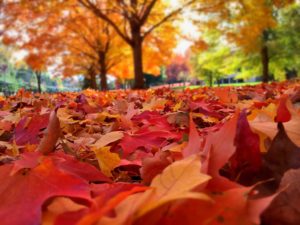

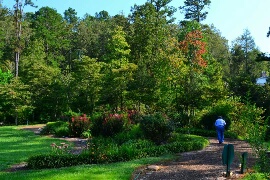
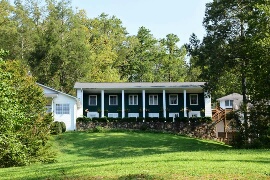


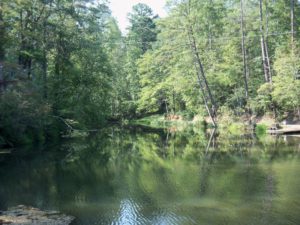

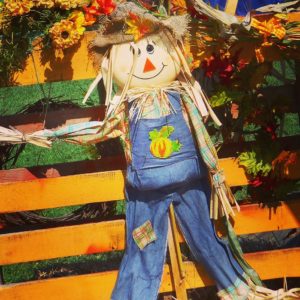
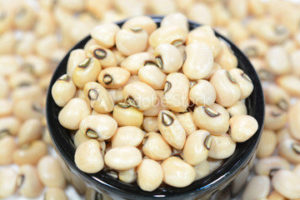
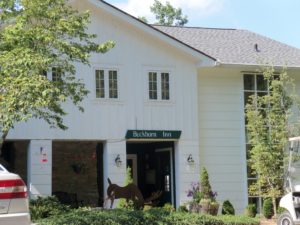
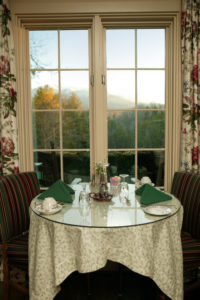
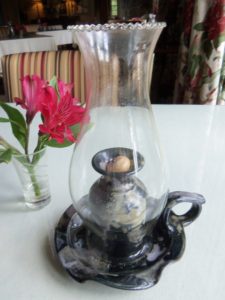
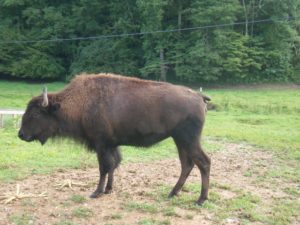
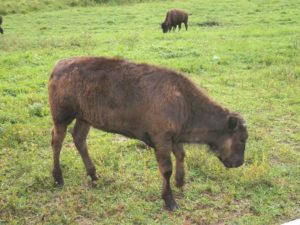

Gatlinburg Weather
Click for weather forecast